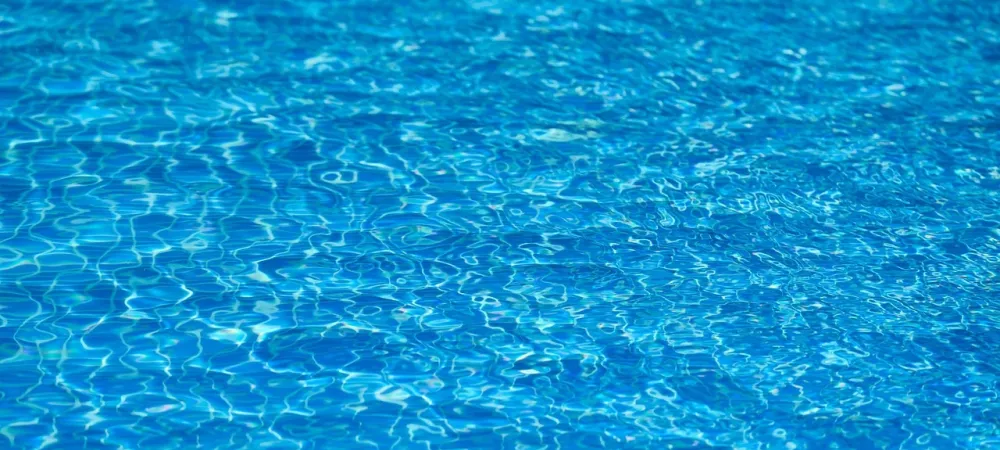
How to Prepare Your Pool For Winter
Key Information
To prepare your pool for winter, balance the water chemistry, deep-clean the pool, lower the water level per your cover type, add winterizing chemicals, blow out and plug lines, protect or remove equipment, and secure a well-fitted cover. Proper pool winterization prevents freeze damage, controls algae, and makes spring opening faster, safer, and less expensive.
What Is Pool Winterization?
Pool winterization is the process of protecting your pool, plumbing, and equipment during cold months when the pool is not in use. It includes water balancing, sanitation, mechanical preparation, and covering to prevent debris, algae growth, and freeze damage. For homeowners, thorough winterization reduces repair risk to pumps, heaters, and pipes, preserves surface finishes, and cuts spring startup costs and time.
Key Benefits of Pool Winterization
- Prevents freeze damage. Properly drained and air-locked lines, plus protected equipment, reduce the risk of cracked pipes and costly leaks.
- Reduces algae and staining. Balanced water and long-lasting algaecides/mineral treatments keep water clear and surfaces cleaner through the off-season.
- Extends equipment life. Cleaning and drying components, removing drain plugs, and storing accessories reduce corrosion and wear.
- Faster, cheaper spring opening. Clear water and debris control mean fewer chemicals, less vacuuming, and shorter prep time in spring.
- Improves safety and cleanliness. Secured safety or solid covers block debris and unauthorized access.
Types of Pool Winter Covers
Type 1: Mesh Safety Cover
Description: Tensioned, anchored cover that lets rain/snow melt pass through while blocking debris.
Best for: Inground pools needing strong safety performance and easier handling.
Pros and cons: Lighter and safer to walk on; may allow fine silt and some sunlight through, requiring stronger winter chemistry.
Type 2: Solid Safety Cover (with drain panel or pump)
Description: Opaque, anchored cover that blocks light and debris; water removed via built-in drain or cover pump.
Best for: Owners prioritizing the clearest spring water and algae prevention.
Pros and cons: Excellent debris and light block; heavier and may require a cover pump or drain maintenance.
Type 3: Above-Ground Winter Cover (tarp-style with cable)
Description: Floating tarp secured with a cable and winch; often used with air pillow.
Best for: Above-ground pools with simple seasonal closures.
Pros and cons: Affordable and easy to install; can collect water and leaves, needs regular pump-off and debris removal.
How to Prepare Your Pool for Winter (Step-by-Step)
Step 1: Test and balance water.
Adjust pH (7.2–7.6), total alkalinity, calcium hardness, and sanitizer to recommended ranges. Proper balance minimizes scaling, etching, and metal staining over winter.
Step 2: Deep-clean the pool.
Brush walls and floor, vacuum thoroughly, and skim debris. Clean skimmer baskets and pump strainer to prevent organic load that fuels algae.
Step 3: Shock and add winter chemicals.
Use a chlorine shock (or non-chlorine per your surface/system), add a long-lasting algaecide, metal sequestrant if needed, and (for salt pools) consider turning off the cell as temps drop.
Step 4: Lower water level per cover type.
For mesh/safety covers, typically lower to 12–18 inches below the skimmer; for solid covers, follow manufacturer guidance. Above-ground pools often lower just below the skimmer and return.
Step 5: Protect plumbing lines.
Blow out suction, return, and heater lines using a suitable blower. Add pool-safe antifreeze where required and plug returns and skimmers (use a Gizzmo or similar for skimmers).
Step 6: Service and store equipment.
Drain pump, filter, heater, and chlorinator; remove drain plugs and store them in the pump basket. Clean filter media (backwash sand/DE; chemically clean cartridges), then store accessories (ladders, cleaners) dry.
Step 7: Install cover and manage water on top.
Place and tension anchors for safety covers or secure above-ground covers with cable and winch. Use a cover pump for standing water on solid covers; clear leaves regularly to avoid sag and strain.
What to Know for Your Area
- Where you live: If your region freezes, fully winterize the plumbing and equipment. In milder areas, you can use a cover and run freeze-protection, but still balance and sanitize the water for light off-season use.
- When to close: Aim to close once daytime highs are falling and the water is around 60°F or lower. Cooler water slows algae, which helps keep things clear under the cover.
- Rules and manuals: Follow local guidelines for draining water and storing chemicals. Check your heater manual for any winter steps specific to your model.
Common Mistakes to Avoid
- Mistake 1: Covering too early with warm water.
Warm water invites algae blooms under the cover. Wait until water is near ~60°F, then shock and close. - Mistake 2: Skipping line blow-outs.
Relying only on antifreeze can leave trapped water pockets. Always blow out lines first and then add antifreeze where required. - Mistake 3: Ignoring the cover all winter.
Allowing water and leaves to accumulate stresses anchors and seams. Pump off standing water and clear debris after storms.
Frequently Asked Questions
How low should I drop the water level before covering?
For most safety covers, 12–18 inches below the skimmer is typical; follow your cover manual. Above-ground pools often lower just below skimmer and return to keep the liner stable.
Do I still need chemicals if I am not using the pool?
Yes. Balanced water plus a winter algaecide and, when appropriate, a sequestrant keep water clear and protect surfaces and equipment during the off-season.
Can I leave my pump running all winter instead of closing?
In mild regions, freeze-protection cycles can work, but you still need balanced water and a secure cover. In hard-freeze areas, full winterization is safer and more cost-effective.








